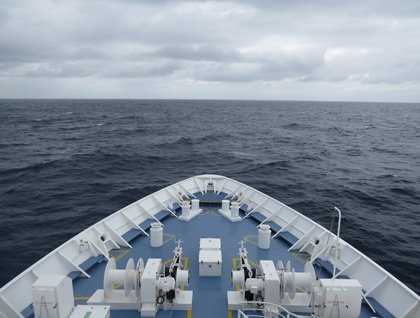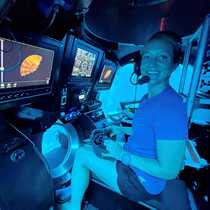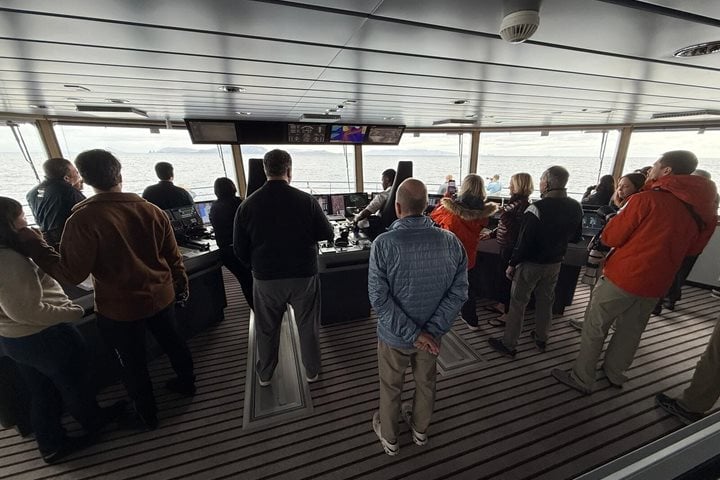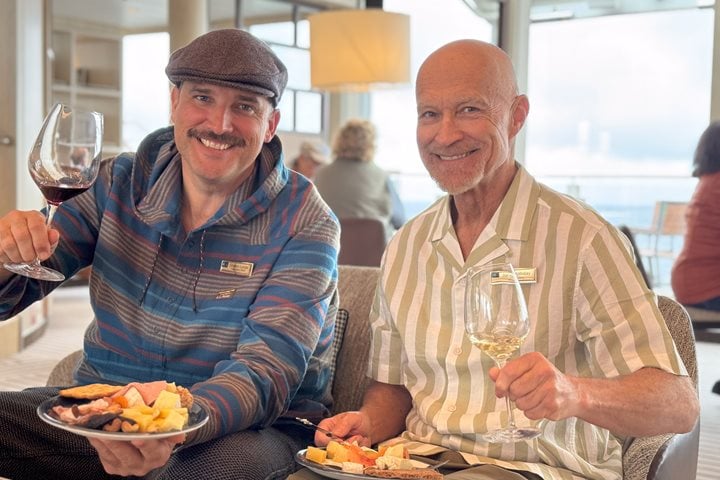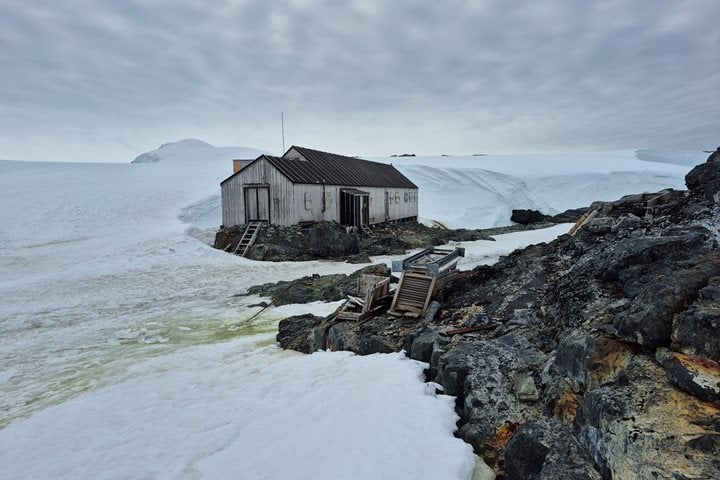The quiet dining room at breakfast was a good indication that we were once again crossing the Drake Passage. After 6 busy days exploring the Antarctic Peninsula, the choppy seas were a good excuse to sleep-in and get some rest from our adventurous week. Since conditions were not ideal to be out on the decks, today was a good day to visit the bridge and chat to our Captain and Officers about the logistics of such a journey. It was intriguing to see the route map of travels and many members traced our path on their own maps-a great souvenir to take home!
Though we were leaving Antarctica, we were not finished learning about its unique ecosystem. Ralph Lee Hopkins and Flip Nicklin, our onboard National Geographic photographers, gave entertaining talks about photography techniques and some of their previous expeditions. Between our delicious meals and tea time, the naturalists aboard National Geographic Orion filled the day with informational presentations about Antarctic history, geology, and plankton productivity in the Southern Ocean.
After spending the last week marveling at the incredible wildlife-whales, seals, penguins-it was interesting to learn more about their food web. With the water temperature around the Antarctic Peninsula ranging from 28 to 32 degrees Fahrenheit, many assume that not much can live in the cold, dark waters. However, that is not true! The biological productivity in Antarctic waters is the highest in the world. The cold temperature allows more gasses like oxygen and carbon dioxide to be dissolved in the water. This, combined with the long daylight hours and the upwelling present around the peninsula, creates the perfect environment for large algal blooms. Diatoms, a type of golden-brown algae, are abundant in Antarctic waters and are the main food source for krill. Krill are a keystone species in the Southern Ocean and are a staple food source for the whales, seals, penguins, and sea birds that we have encountered on our expedition.
As the day winded down, everyone enjoyed a relaxing evening sipping cocktails and sharing photographs. The thousands of photos that were collected inspired some storytelling and we spent the remainder of the night reminiscing about bubble net feeding whales, beautiful sunsets, blue ice, penguin colonies, and the variety of seals. At nearly 9pm, we crossed the Antarctic Convergence. Goodbye for now, Antarctica.

